Speaking of Nature: From rare to regular: The Carolina Wren may soon become a regular backyard bird for all of us
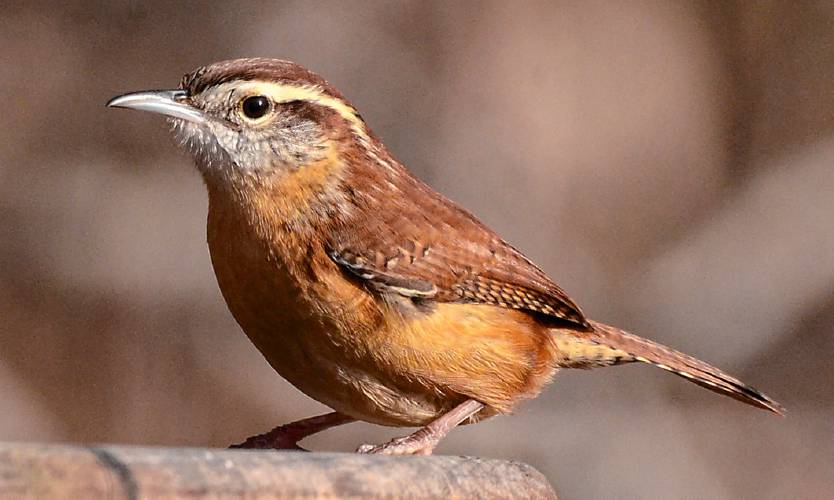
The Carolina Wren is impossible to mistake for any other bird species in our area. The combination of the white eye-stripe and the overall color of cinnamon makes identifying this bird a cinch. PHOTO BY BILL DANIELSON
| Published: 02-27-2024 2:53 PM |
According to the National Oceanic and Atmospheric Administration (NOAA), 2023 was the warmest year ever recorded. I remember it being hot in the summertime, but I think the effect of this heat was most noticed by me in the autumn. The Thinking Chair season was markedly extended and though the temperatures were not “warm” per say, they were also not prohibitively cold. Days spent down at the edge of the meadow stretched into November without any particular discomfort.
Because of this elevated warmth, and because of a joint decision to make 2023 a year of a “staycation,” I had lots of time to focus on my bird observations. So, it should come as no surprise that from July to November of last year I set five consecutive bird observation records within the confines of my property. In some cases, I broke the older records by five to 10 species.
Then, with the arrival of winter, the new records became elusive. In December I merely tied the old record and in January I ended up with yet another tie; impressive feats, but not as exciting as setting new records. As of the writing of this column I am currently two species short of tying the February record and time is running out quickly. I realize that we get an extra day of February this year, but unfortunately I will spend this day indoors.
Yes, it has been a winter of high drama so far, but there has also been a quiet development that may be, in part, due to the relatively mild winter that we have experienced this year. Starting back in September (the warmest September ever recorded) I have seen a wonderful little bird on a semi-regular basis. This means that I have seen the bird every month, but not every single day that I watch the feeders. This is a pattern that has become “regular” for the little Red-breasted Nuthatches who appear to have taken up residence in my neighborhood, and it may be a sign of things to come for another little bird.
The species I speak about is the Carolina Wren (Thryothorus ludovicianus). For years I have been envious of my mother’s yard and her resident Carolina Wren. There was a time when I rented a house in Buckland, and I had a regular Carolina Wren in my yard, but after that I started living in places that just didn’t have the right combination of habitat and elevation. It seems that I was too high and that the wrens just weren’t interested. Drop down in elevation and I could see them, but from within the confines of my six acres there just weren’t any birds representing the species.
I moved to my current home in July of 2005 and I started keeping lists immediately. After a thorough review of all the lists that I maintained, I found the following information on sightings of the Carolina Wren. The first sighting was in September of 2008. The second and third sightings were in August of 2016 and 2017, respectively. These sightings make sense in two ways. First, it is not unusual for birds to wander in the late summer and early autumn. Second, 2016 was another El Nino year with very warm temperatures.
I didn’t see another member of the species until February of 2021, which was an unusual winter sighting. Then, starting in September of 2023, I have seen (or heard) a Carolina Wren in every month since. Warm temperatures may have given this bird an opportunity to linger and the steady supply of food provided by my neighbor and myself may have given the bird reason to stay. Will there be a pair of Carolina Wrens that breed in my yard this year? I suppose that depends upon whether this male can attract a mate. If he can’t, then he may reasonably decide to move himself to where the females are.
I have many photos of the male wren in my collection, so settling on just one of them to share with you today was not particularly easy. I wanted to make sure that I chose one that represented the bird who has been visiting my feeders over the past few months, but even this was more difficult than I might have expected. Should I select a photo that somehow conveys the personality of the bird, or should I go with one that indicates a measure of its behavior? I had examples of both, but they were all a bit “busy.”
Article continues after...
Yesterday's Most Read Articles
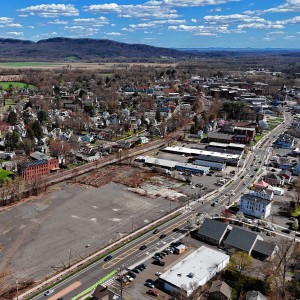 Northampton bans auto dealerships near downtown; zone change won’t affect Volvo operation on King Street
Northampton bans auto dealerships near downtown; zone change won’t affect Volvo operation on King Street
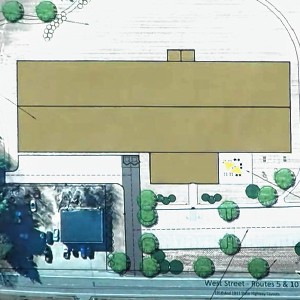 Proposed Hatfield pickleball/tennis building raising eyebrows
Proposed Hatfield pickleball/tennis building raising eyebrows
 South Hadley man killed in I-91 crash
South Hadley man killed in I-91 crash
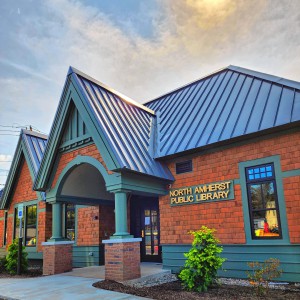 ‘Home away from home’: North Amherst Library officially dedicated, as anonymous donor of $1.7M revealed
‘Home away from home’: North Amherst Library officially dedicated, as anonymous donor of $1.7M revealed
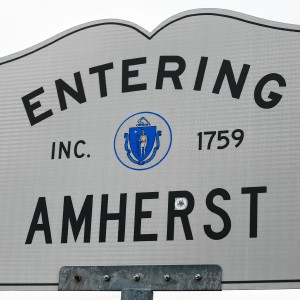 Police respond to alcohol-fueled incidents in Amherst
Police respond to alcohol-fueled incidents in Amherst
 Public gets a look at progress on Northampton Resilience Hub
Public gets a look at progress on Northampton Resilience Hub
So, I eventually decided to go with a photo that did a good job of presenting the bird’s field markings.
This was also enhanced by the fact that the photo had a “clean” background. Basically, this is the sort of photo that you might find in a field guide. Note the long, slender, “decurved” beak, the bold white “eyestripe,” and the powerful coloration of shades of cinnamon. No other bird in our area has these characteristics, so if you have one in your yard it should be quite clear what you are looking at.
NOAA suggests that there is a 22% chance that 2024 will assume the mantle of warmest year on record. This is not something that we should be happy about, but it seems that humanity is unwilling to do anything to prevent it. We live in a world that is changing and we can keep our eyes open for signs of that change. Cornell Lab of Ornithology shows a range map that stops at the Massachusetts-Connecticut border, but National Audubon puts the range as far north as the Massachusetts-Vermont border. With a gain of 1.5 degrees Celsius in global temperatures, this range will extend up into Canada. The Carolina Wren may soon become a regular backyard bird for all of us.
Bill Danielson has been a professional writer and nature photographer for 26 years. He has worked for the National Park Service, the US Forest Service, the Nature Conservancy and the Massachusetts State Parks and he currently teaches high school biology and physics. For more in formation visit his website at www.speakingofnature.com, or go to Speaking of Nature on Facebook.

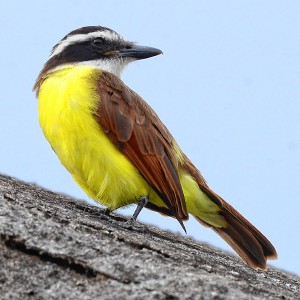 Speaking of Nature: Capturing my Bermuda nemesis: The Great Kiskadee nearly evaded me, until I followed its song
Speaking of Nature: Capturing my Bermuda nemesis: The Great Kiskadee nearly evaded me, until I followed its song Easthampton author Emily Nagoski has done the research: It’s OK to love your body
Easthampton author Emily Nagoski has done the research: It’s OK to love your body Earth Matters: Honoring a local hero: After 40 years, Hitchcock Center bids farewell to educator and creative leader, Colleen Kelley
Earth Matters: Honoring a local hero: After 40 years, Hitchcock Center bids farewell to educator and creative leader, Colleen Kelley Valley Bounty: Delivering local food onto students’ plates: Marty’s Local connects farms to businesses
Valley Bounty: Delivering local food onto students’ plates: Marty’s Local connects farms to businesses
